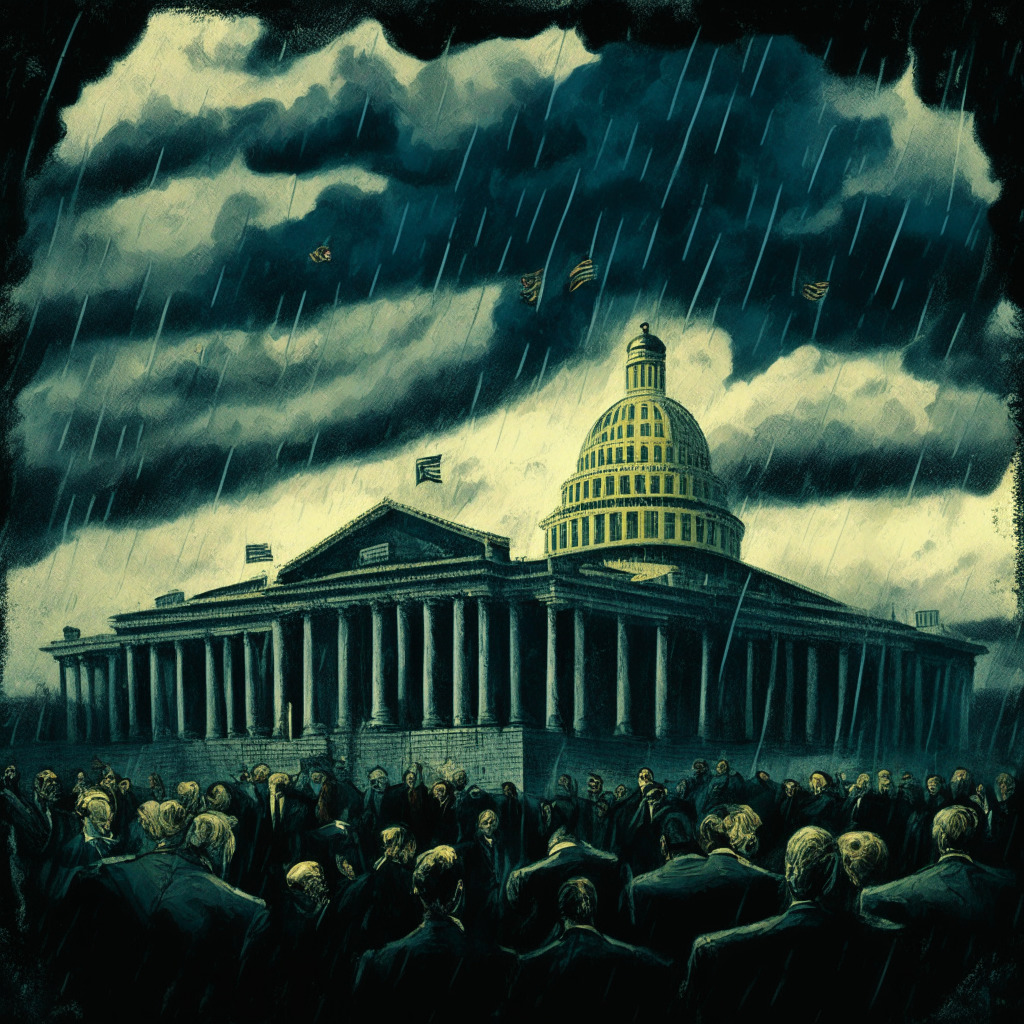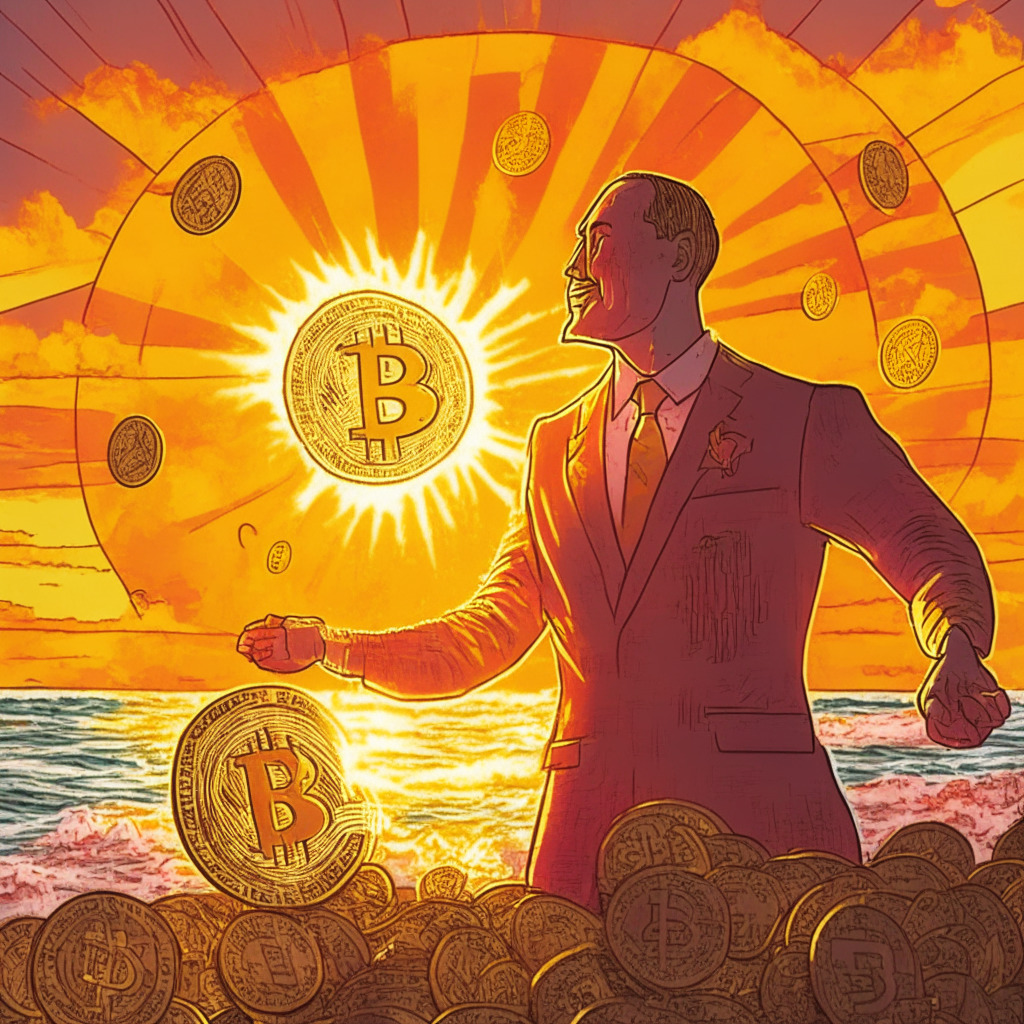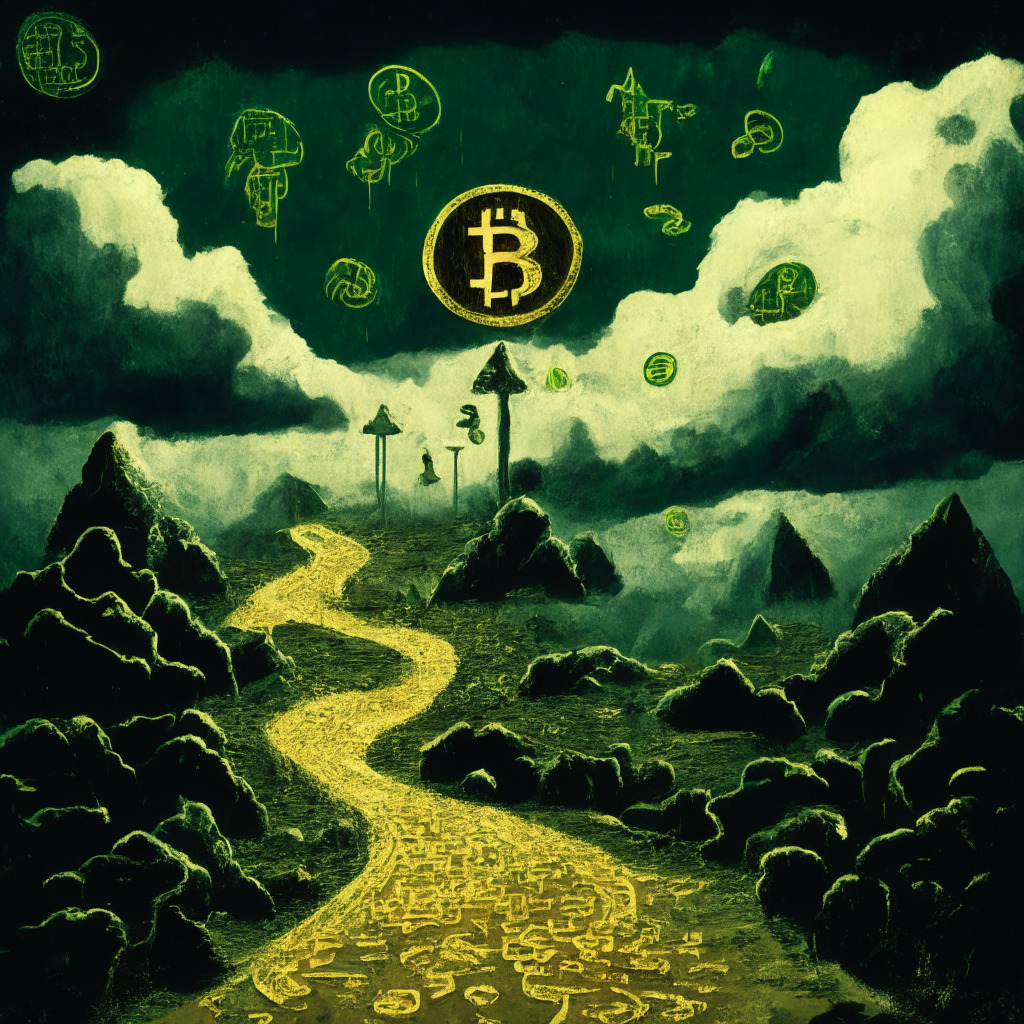Vice Chairman of the Federal Reserve, Michael Barr, in a fintech event, emphasized the need for regulatory oversight in the swift adoption of blockchain technology. He discussed the basic research into Central Bank Digital Currency (CBDC), potential for stablecoin legislation, and the significance of balancing innovation with potential risks.
Search Results for: US Federal Reserve
Journey Towards a US Central Bank Digital Currency: A Rocky Path or a Road to Progress?
The U.S. is still in the “basic research” phase of developing a central bank digital currency (CBDC), according to Federal Reserve Vice Chairman, Michael Barr. He highlighted the importance of gaining backing from legislative bodies, addressing risks posed by stablecoins, and establishing a competent regulatory framework before proceeding with any initiatives.
Navigating the Blockchain Future: The Impact of Federal Leadership Changes on Crypto Regulation
“The leadership at institutions like the Federal Reserve significantly influence policy changes, specifically cryptocurrency and blockchain regulation. While the US Federal Reserve reportedly has no plans for a digital dollar, the recent changes in leadership may significantly impact future policy. As cryptocurrencies and blockchain technology reshape financial systems, the balance between innovation and regulation remains a focus.”
The Paradox of Rate Hikes: Federal Reserve Tactics, BitMEX Perspective and the Emergence of the AI-Crypto Ecosystem
In a keynote at Korea Blockchain Week, Arthur Hayes, the founder of BitMEX, argued that Federal Reserve’s tactics to combat inflation could inadvertently fuel economic growth. He also predicted the potential of AI companies and a significant asset bubble resulting from the convergence of AI, crypto, and money printing.
Federal Reserve Impacts on Bullish BTC and Ethereum’s Centralization Struggles
Arthur Hayes, former CEO and co-founder of Bitmex, anticipates a response to the BTC bull market within six to twelve months. This expectation is connected to the Federal Reserve’s $25 billion program meant to stabilize the U.S. banking system. Meanwhile, Ethereum faces challenges around the centralization of nodes and scalability.
Shackles or Safeguards? Federal Reserve’s Crypto Oversight Fuels Global Expansion
The Federal Reserve’s intensified scrutiny of banks’ cryptocurrency activities has sparked criticism from Republican lawmakers who argue this deters institutions from participating in the digital asset landscape. The Fed’s new requirements may potentially suppress the progress of decentralized finance. Amidst this, U.S. regulations on digital assets remain unclear, pushing some crypto companies to explore alternative markets overseas. The discourse focuses on balancing effective supervision with fostering blockchain innovation.
Federal Reserve’s Tightened Grip on Crypto Sparks Republican Lawmakers’ Concerns
Republican lawmakers express concerns over the Federal Reserve’s intensified oversight on crypto and stablecoin activities, arguing it might block the progress of a legislative proposal aimed at regulating stablecoins. Lawmakers believe the increased scrutiny might dissuade financial institutions from entering the digital asset ecosystem.
Navigating the Crypto Maze Amid Federal Reserve’s Fight Against Inflation
“Jerome Powell underlined the struggle against inflation, necessitating continuous aggressive rate hikes. Amidst this, attention spiked on Bitcoin but market warnings intensify. Cryptocurrencies present potential opportunities having strong fundamentals and positive technical analyses, yet they remain a high-risk asset class.”
Bitcoin’s Future: Influenced by Federal Reserve Policies or Independent Market Stalwart?
“The co-founder of BitMEX, Arthur Hayes, shares an optimistic view of Bitcoin’s future, driven by critique of Federal Reserve’s contentious strategies. Bitcoin is seen as an antidote to banking anomalies, growing fiat liquidity, and may face potential surges or falls.”
Navigating the Current Crypto Sphere: A Look at the Push and Pull of Bull and Bear Forces
“The Federal Reserve’s interest rate hikes till 2024 prompted a dip in Bitcoin and altcoins, yet U.S. equities markets recovered impressively. Meanwhile, Pantera Capital predicts Bitcoin to reach $35,000 by April 2024. Ethereum and Binance Coin face resistance, while Bitcoin, tanking below $24,800, could trigger a sell-off.”
Federal Reserve vs. Bitcoin: Predictable Paths and Uncertain Futures in Economic Stability
At the annual Federal Reserve gathering in Jackson Hole, chairman Jerome Powell’s policy foretells an uncertain economic future. This unpredictable, human-driven system contrasts with the mathematical certainty of cryptocurrencies like Bitcoin. However, the decision between fiat and cryptocurrency still lies in the hands of individual investors.
Bitcoin’s Chilly Wave: Market Effects, Reactions and Future Predictions Amid Federal Reserve Statements
The cryptocurrency market plunged as Bitcoin fell below $26,000, triggered by U.S. Federal Reserve Chair’s statements on countering inflation and possible rate hikes. Leading altcoin Solana also dipped 3%, and MKR saw a 4% decrease due to fears of a loan default. However, despite the gloomy outlook, experts like Sacha Ghebali believe the market could see an upturn if a spot bitcoin ETF is approved, offering a possible crypto market recovery.
Bitcoin’s Resilience amidst Monetary Shocks: A Debate on Investment Stability versus Volatility
Jerome Powell’s hawkish remarks prompted an initial dip, then rebound, for bitcoin, showcasing the cryptocurrency’s resilience to external monetary shocks. Despite volatile tendencies, cryptocurrencies may offer an alternative, potentially stable investment option, even amidst fluctuating traditional markets and restrictive monetary policies.
Federal Reserve Meeting Affects Bitcoin and Ether Values: Crypto Exchange Boosts Liquidity Security
“Bitcoins remain steady as attendees anticipate Jerome Powell’s speech in Jackson Hole. Expectations are tempered, however, by Bank of America’s doubt for strong policy directives from the meeting, causing Bitcoin and Ether values to slip. Meanwhile, Binance seeks to boost liquidity security for low-liquidity token crypto projects and new stablecoin nCOP is introduced on the Polygon network in Colombia.”
Regulating Crypto – Exploring Opportunities and Risks Amidst Politics, Real Estate and Federal Policies
“Miami Mayor, Francis Suarez, continues to push for crypto adoption, advocating for Bitcoin compensation. Meanwhile, Bitcoin-powered real estate opportunities emerge in the Cayman Islands. As for Bitcoin’s future price, a potential value of $27,400 is suggested, with an optimistic rise to $30,300, or a bearish plunge to $24,100.”
Cryptocurrency Upsurge Amid US Economic Concerns: A Risky Haven or Volatile Minefield?
“In the midst of weaker US survey data, leading cryptocurrency prices have been appreciating. Surprisingly, the fear of further interest rate hike has been placated, leading to positive cryptocurrency performance. Meanwhile, volatile meme coin markets present quick gain opportunities. However, cryptocurrency trading remains a high-risk pursuit, requiring thorough due diligence and careful investment.”
Bull vs. Bear: An Unending Tussle in the Cryptocurrency Market
The crypto market is caught amidst bullish and bearish forces with Bitcoin, Ethereum, and BNB showing stability despite declining percentages. Data indicates potential buying opportunities, yet advises patience until market correction ends. Interestingly, long-term stake-holders remain unfazed while the crypto community anticipates U.S. Federal Reserve updates for market impact.
Navigating the Treacherous Terrain: Crypto-Assets and their Impact on the Banking Sector
“Crypto assets pose significant, complex challenges to the banking sector, as shown in FDIC 2023 Risk Review. Key issues include fast-paced innovation, legal ambiguity, immature risk management, ‘contagion risk’, and ‘stablecoin run’ risks. However, carefully negotiating these challenges could harness innovative benefits.”
Navigating the Stablecoin Storm: The Push for Regulation Amid Market Instability
Circle’s Chief Strategy Officer, Dante Disparte, emphasizes the need for federal regulation of stablecoins amid market volatility and banking mishaps. Amidst concerns of “counterfeit US dollars using cryptographic methods”, Disparte sees regulation as a safeguard for investors and a protection of monetary policy.
Rousing the Crypto Market from Slumber: Potential Catalysts on the Horizon
Analysts suggest potential market shifts like spot Bitcoin exchange-traded funds, PayPal’s stablecoin, and an Ethereum upgrade could disrupt the crypto market inertia. Despite recent lethargy, there are anticipations of rekindled enthusiasm due to increased institutional acceptance of cryptocurrencies and indicators of future crypto adoption.
Regulatory Roulette: The Impact of Legal Tussles on the Future of Cryptocurrency
“The ongoing saga of Sam Bankman-Fried’s arrest and subsequent lawsuits against FTX’s former partners has added complexity to the regulatory environment surrounding cryptocurrencies. Affecting venture capital investment and increasing U.S. Federal Reserve involvement, these events are shaping fintech’s future amidst global regulatory flux and uncertainty.”
Hedera Hashgraph HBAR: A Micropayment Powerhouse Attracting Market Attention or a Fleeting Trend?
“Hedera Hashgraph’s HBAR token sees over 15% surge following the inclusion of Dropp, a Hedera-based micropayments platform, on the FedNow. HBAR’s unique use of hashgraph consensus permits over 10k transactions every second. Its growth also aligns with a 288% jump in daily active accounts and a notable spike driven by non-fungible tokens (NFTs).”
Decoding Federal Reserve’s Stance on DLT: Is It an Endorsement or Bare Necessity?
“Distributed Ledger Technology (DLT) becomes increasingly significant in financial future with FedNow featuring Dropp, a micropayments platform built on Hedera Hashgraph DLT. However, the Federal Reserve’s stance remains neutral, neither supporting nor endorsing DLT-powered companies, eliciting polarized opinions from the crypto community.”
Federal Reserve’s Potential Rate Cuts: A Bullish Future for Bitcoin?
“There is a growing sentiment that the Federal Reserve may turn toward rate cuts, which could bode well for Bitcoin. This, along with expected spot Bitcoin ETF approvals, could boost Bitcoin prices; however, these developments are not likely to materialize before early 2024.”
Navigating the Cryptoregulatory Waters: PayPal’s Launch of PYUSD Sparks Debate
“PayPal’s launch of its own stablecoin, PYUSD, brings the pressing issue of cryptocurrency regulation into focus. As cryptocurrencies integrate into mainstream financial services, there’s growing consensus on the need for a well-defined regulatory framework that can oversee these innovations while ensuring consumer protection and financial system integrity.”
Federal Reserve’s Cryptocurrency Supervision: A Barrier or a Blessing?
“The Federal Reserve’s program to monitor lender interactions with cryptocurrencies balances dynamic progression with risk exposure, aiming to preserve banking system dependability. Despite potential restriction, the crypto sector remains potent with income-generating coins. Yet, the high-risk nature of cryptocurrencies necessitates caution and prudent harnessing of multiple indicators for successful trading decisions.”
PayPal’s PYUSD: Stepping Stone or Stumbling Block for Blockchain’s Future?
“The recent launch of PayPal’s dollar-backed stablecoin, PYUSD, has incited controversy due to the lack of Federal regulation in this domain. Some see this as undermining the Federal Reserve’s role, while others view it as stepping stone to a modern payment system. The overarching consensus is the imperative need for a clear regulatory framework in the realm of cryptocurrencies.”
Blockchain vs. Banks: The Unseen War on Crypto in Adult Entertainment Industry
“Digital currency and adult entertainment sectors face increasing scrutiny from regulators, influencing crypto platforms to implement rigid KYC and AML protocols. This leads to professionals being blacklisted, and platforms like SpankPay and WetSpace struggling to secure banking partnerships.”
Crypto Market and Economic Impacts: How the CPI, Federal Reserve Moves and Inflation Rate Shape the Future
The crypto community anticipates the economic impacts of the upcoming Consumer Price Index release, which will likely influence Bitcoin and other cryptocurrencies’ value. Additionally, the Federal Reserve plans to supervise banks’ crypto-related activities through dedicated digital asset experts, aiming to ensure safe and sound operations. Meanwhile, Binance has acquired operation licenses in El Salvador to bolster its global legitimacy.
Federal Reserve’s Crypto Oversight: Balancing Innovation and Regulation
The U.S. Federal Reserve is extending oversight of banks involved in the crypto and blockchain sector with the Novel Activities Supervision Program. It aims to balance innovation with risk management, covering crypto-related services including custody, lending, and trading. This move raises questions about the intersection of banking, regulations, and the emerging crypto domain which could shape blockchain’s future.
U.S Federal Reserve Steers into Crypto: Balancing Innovation with Regulation
The U.S. Federal Reserve is stepping into the crypto industry, establishing a supervision program for banks’ crypto involvement. Although current rules remain unaltered, the approach for oversight has been defined. This move indicates the Fed’s interest in harnessing digital assets’ potential but with keenness to mitigate risks involved. Such actions could potentially lead to tighter crypto regulations.
Exploring the Impacts of PayPal’s Stablecoin PYUSD: Vehicle for Financial Inclusion or Corporate Gain?
“PayPal’s U.S. stablecoin, PYUSD, has sparked interest in the crypto world. Unlike smaller cryptofirms, traditional giants like PayPal can influence regulators to accommodate their aspirations. However, whether PYUSD will democratize access or predominantly serve business interests remains uncertain.”































